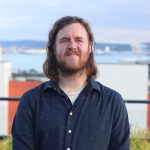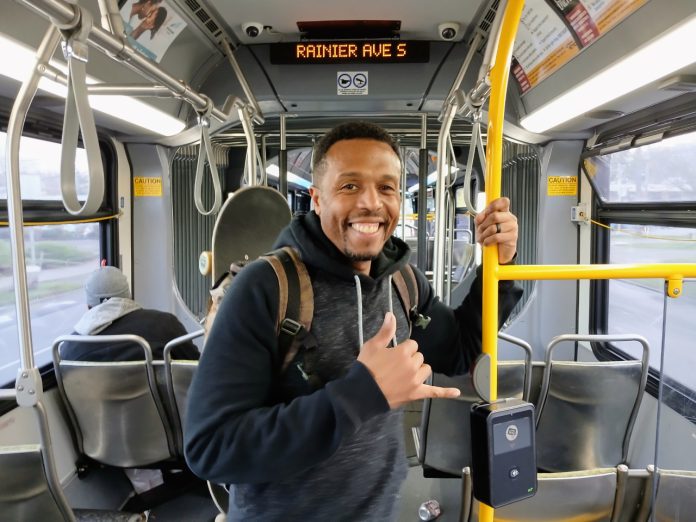
The race to determine who will fill the District 2 vacancy left on the Seattle City Council by the resignation of Tammy Morales is heating up. In late February, Adonis Ducksworth jumped in the race, on the heels of karate dojo owner Takayo Ederer and Assistant City Attorney Eddie Lin declaring their candidacy.
The winner of this November’s election will replace Mark Solomon, who was appointed to fill the seat on a temporary basis by the council in January. Ducksworth also applied for the appointment and finished as the runner-up after being nominated by Councilmember Dan Strauss. Strauss and D3 Councilmember Joy Hollingsworth have subsequently endorsed Ducksworth in his election bid. The election victor will serve only a two-year term before having to run for reelection in 2027.
Ducksworth serves as a transportation advisor in Mayor Bruce Harrell’s office, and previously worked on communications and outreach at the Seattle Department of Transportation (SDOT) since 2016. As someone who helped to develop both the newly adopted Seattle Transportation Plan and the 2024 Seattle Transportation Levy, Ducksworth brings a deep background in mobility issues to the table, something that is lacking on the current council.
That expertise could also prove to be a big asset when it comes to District 2, which includes all of Southeast Seattle, Chinatown-International District and Yesler Terrace, and faces some unique transportation challenges — and opportunities. Ducksworth’s means of transport include skateboarding and biking — and he’s also a beat-making techno DJ, by the way.
But Ducksworth isn’t just running as the transportation candidate. He also has a vision for public safety more broadly, with a focus on early interventions with youth to reduce violence and increase access to opportunity in some of the city’s most neglected neighborhoods. Opening the Rainier Beach Skate Park is a top priority for him, and he wants to see the city’s next education levy include a focus on providing child care to ease cost burdens on working families.
“I’m all about kids, culture, and community and giving kids more opportunities so kids feel safer in the neighborhood, giving families more opportunities and supporting families,” Ducksworth told The Urbanist in an interview conducted at the Rainier Beach public library. “Supporting families with good wages, good jobs, good job opportunities, supporting families with housing options that they can afford, and supporting families with safe, reliable transportation.”
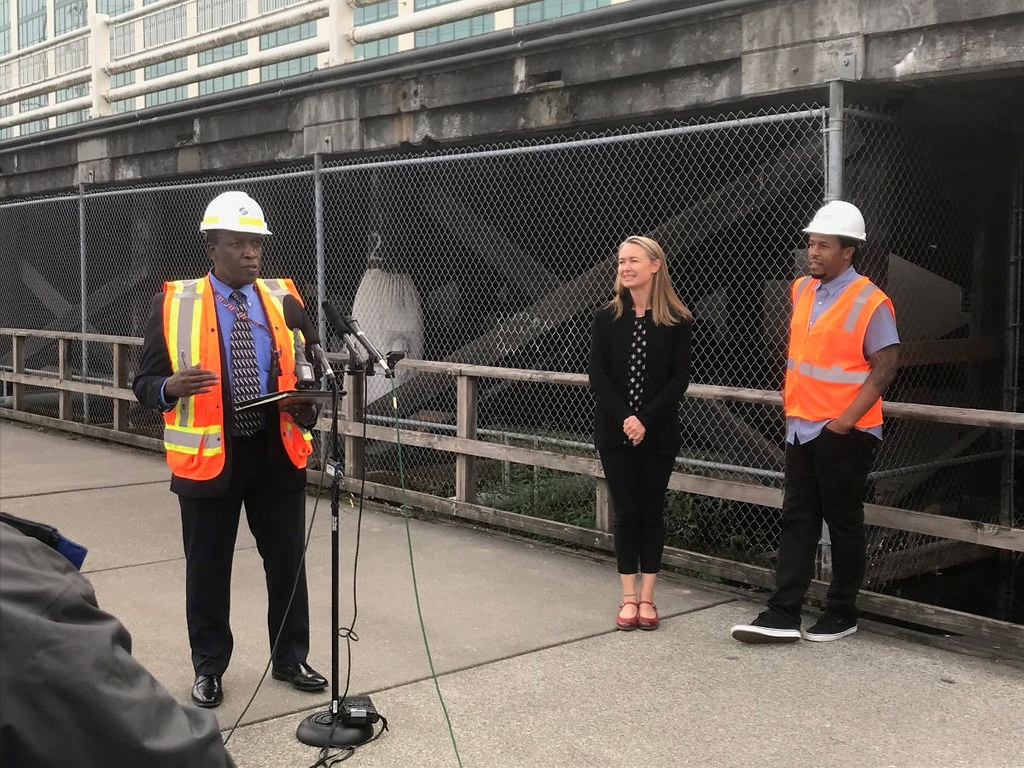
In order to fund his vision for better social services, Ducksworth has voiced support for some progressive revenue options, such as a capital gains tax.
Working in community on transportation projects
Ducksworth got his start at SDOT conducting outreach on the major overhaul of 23rd Avenue through the Central District that started construction in 2015. One of the biggest transportation projects the neighborhood had seen in decades, many small business owners along the corridor sounded the alarm around lost revenue from the construction schedule, which disrupted things along the street for nearly two years.
In the end, Mayor Ed Murray agreed to create a $650,000 fund intended to make up for lost revenue at the smallest businesses along 23rd. But many neighborhood residents and business owners saw that move as too little, too late, and also saw the broader 23rd Avenue project as another example of the neighborhood being dictated to, and not brought along.
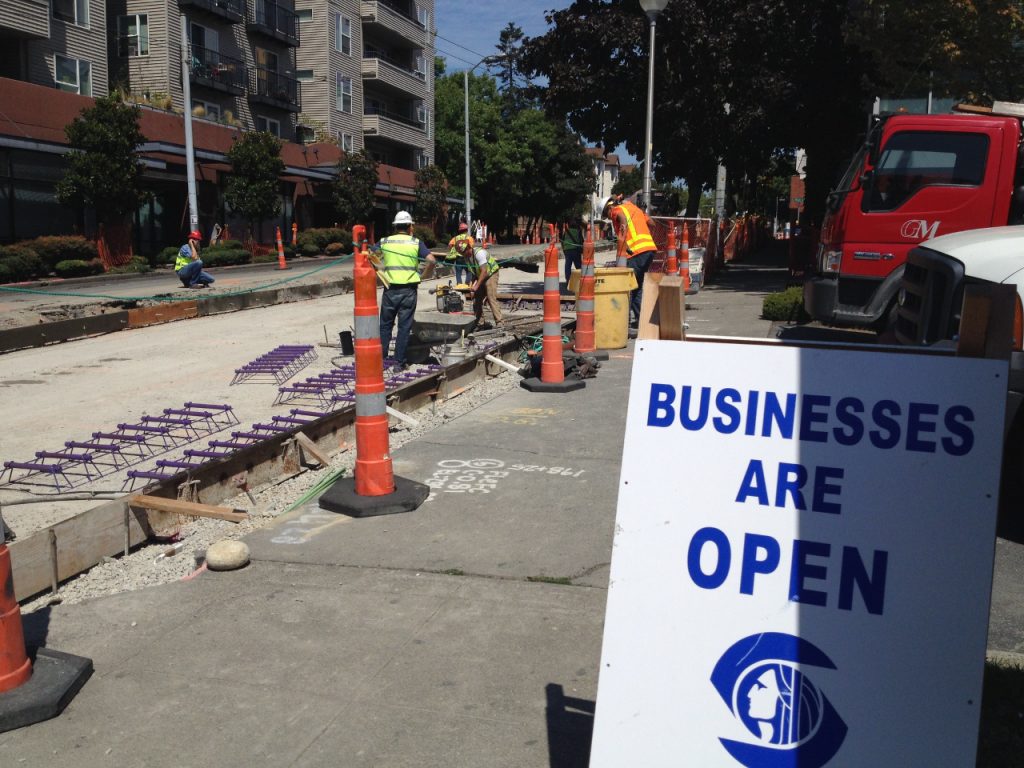
For Ducksworth, the project taught him the importance of getting the nearby community onboard with work that impacts them before it starts.
“There is just a lot of history that is really important to understand in the context of the work that you’re doing,” Ducksworth said. “On the 23rd project, when you’re working in what was a historically Black neighborhood, and you’re only engaging with certain groups of folks, but you’re not engaging with the churches and [seeing] how important the churches in that community have been, you’re missing something there.”
In 2017, Ducksworth found himself in the middle of another contentious project, albeit at a smaller scale. Plans to reallocate street space adjacent to Asa Mercer Middle School in Beacon Hill, funded by the city’s Neighborhood Street Fund program, were met with significant opposition from nearby residents. Intended to slow down traffic and provide nearby school students with an easier way to get across the street, the plans included the elimination of a left turn that became the focus of significant ire.
Here Ducksworth also drew a lesson that can be applied more broadly around outreach. “That project got rolled out in such a way that we were already behind the eight ball in what we’re trying to do,” Ducksworth said.
When it comes to the eight years of transportation investments planned as part of the new transportation levy, Ducksworth is clear that the city can’t run on autopilot when it comes to engaging with community — it actually has to listen.
“We do a lot of outreach and engagement early on in our planning, to really get several things into the levy that people want, and voters voted for that,” Ducksworth said. “Well now we’ve got to go and implement those things. We got to build those things. But we also have to realize: it’s not a one-shoe-fits-all type of thing.”
A vision for a safer Rainier Avenue and a safer MLK Jr Way
Two of District 2’s most important — and most dangerous — north-south corridors will face significant decision points over the coming years, and Ducksworth has clearly thought a lot about what the future of both Rainier Avenue and MLK Jr Way should look like.
Rainier Avenue, which is seeing a building boom around Sound Transit’s forthcoming Judkins Park light rail station, remains one of the city’s most crash-prone corridors. While spot improvements are planned at the problematic I-90 ramps, the city has a bigger opportunity to make change as it starts work on a planned repaving project between Jackson Street and Walden Street in Mount Baker. Ducksworth wants to see changes up and down Rainier, specifically calling out the benefits that could come from making the street safer, and speeding up buses.

“If we can make Rainier safer, then that’s a priority for me,” Ducksworth said, referencing both a need to change the street directly but also encourage development along Rainier Avenue that is less car-oriented, with storefronts closer to the property lines. “I’m interested in all kinds of different options to slow cars down and potentially looking changing the built environment out there to make it better, so that you could have more walkable shops.”
While many stretches of Rainier Avenue already have dedicated bus lanes, the issue of speeding drivers using those lanes to bypass traffic has become a focal point of community concerns. Ducksworth said he’d like to see more buses in those bus lanes, as well as potential automatic cameras to ticket drivers illegally using the lanes. “That is one that you would have to work with the community down here about what that looks like,” Ducksworth said.
King County Metro is currently collecting data on how many drivers are illegally using the bus lanes on Rainier Avenue, as part of a pilot program, but the city would ultimately need to sign off on actual tickets.
Along MLK Way, Sound Transit has turned its attention to the issue of safety along the corridor where its light rail trains run at-grade, but most of the interventions that are being proposed are small-scale and focused on changing pedestrian behavior, not slowing down drivers. Here too Ducksworth wants to see more walkable redevelopments that encourage walking and biking along the street, and hinted that he could even see the possibility of protected bike lanes along MLK.
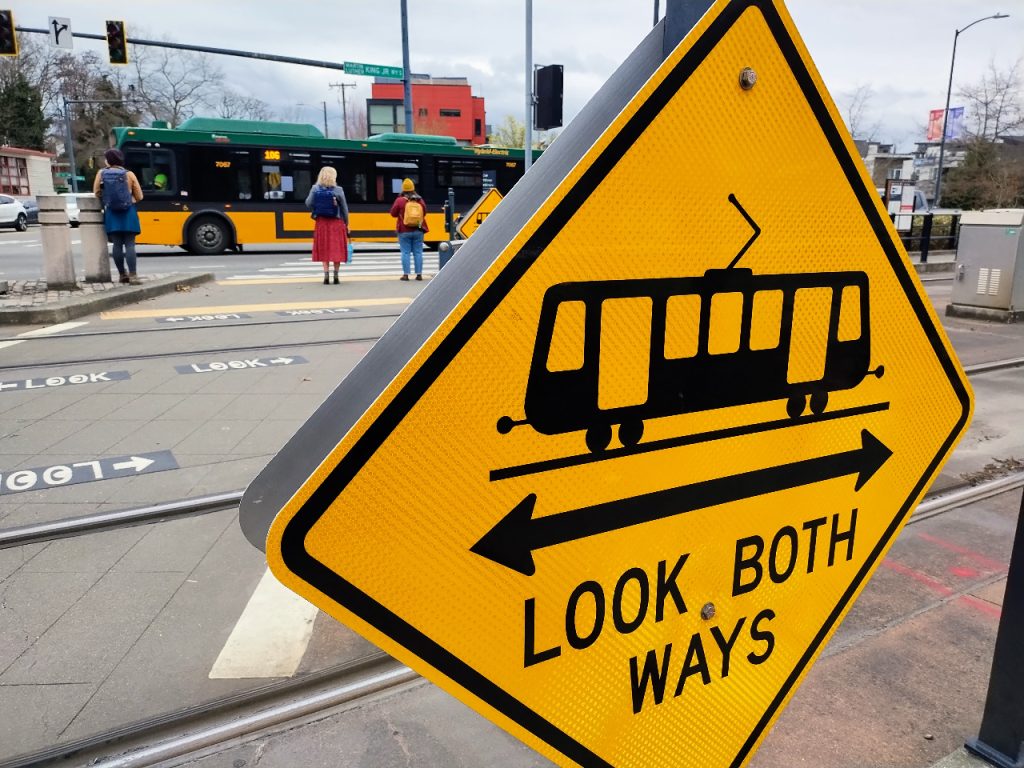
“You could have a situation where you have all modes working along MLK, if you catch what I’m saying. So that would be a vision for MLK, and that’s something that I definitely feel like I’m into working towards,” Ducksworth said.
Going bolder with neighborhood centers
When it comes to the subject of Seattle’s Comprehensive Plan, Ducksworth was clear that we wants to see the Harrell Administration expand its 30 proposed neighborhood centers, which are focal points for denser multifamily residential and commercial development located near existing commercial hubs around the city. At only a few blocks wide, the potential of neighborhood centers will be severely limited by their size, and leave behind the potential for additional homes near transit and amenities.
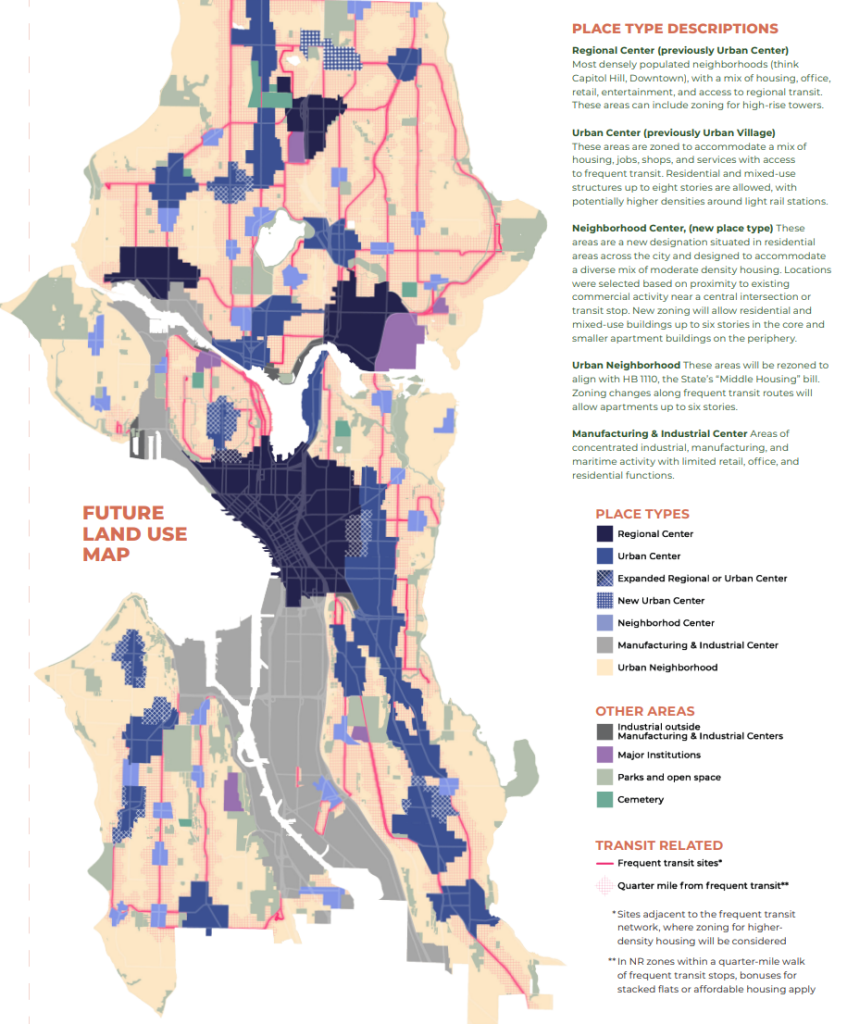
“I think about how I grew up on Beacon Hill. We lived in a triplex two blocks off of Beacon Avenue and our place didn’t look any different than any of the other houses on the block. I had access to the park, and me and my friends, we skateboarded all through the neighborhood. It was great for a kid growing up,” Ducksworth said. “You can build along the transit routes. But I would offer to say you can go farther out. I think it’s 800 feet in some places, right? And I would say, go farther out and have more options for housing as you go farther out.”
The council is poised to vote on where neighborhood centers should be this summer, before Ducksworth would take office, but the entire plan is in limbo while a set of appeals from homeowner groups are worked out.
Implementing policies that ensure longtime residents are able to stay in the neighborhood is also important to Ducksworth.
“You have to think pretty critically about anti-displacement, so that we’re not displacing people, for very expensive townhomes and houses and other things that get built,” he said. “And so you have things like [Equitable Development Initiative] and helping longtime residents, older folks, stay in their homes and help them with tax assistance and that kind of thing.”
Ducksworth declined to state whether he’d supported the winning Proposition 1A ballot measure establishing a new high-earner payroll tax to fund social housing in the city, or whether he’d voted for the Harrell-backed alternative measure, 1B. But he said he’s fully on board with the idea of social housing, which would bring a new model for affordable workforce housing into the mix of the city’s subsidized housing options.
“I support social housing and will help make it a successful model in Seattle,” Ducksworth said. “I feel like we need every solution available to address our housing and affordability crisis. On Council I look forward to being a partner in making sure that we do what is needed to implement this new policy.”
His opponent, Eddie Lin, told The Urbanist that he supported Prop 1B, which included no new city revenues, over accountability concerns. However, similar to Ducksworth, Lin pledged to back the Seattle Social Housing Developer now that the dedicated funding measure has passed — and by a resounding 26-point margin.
More localized police recruitment and youth intervention
When the topic turned to public safety more broadly, Ducksworth declined to draw a major distinction between himself and the current city council’s majority bloc when it comes to the Seattle Police Department (SPD). He brought up the fact that Seattle is currently ranked behind other peer cities when it comes to the number of police per capita. But he said a bigger priority than hiring itself is having new recruits who understand the community they’re serving in.
“Looking at the data, probably [SPD] can stand to have more officers, right? But for me, it’s not so much about hurry up and let’s flood the streets with police. I would rather take our time to make sure that we get the right police. And so that means accountability. That means relationships and representation.”
It could mean a recruiting push to get more Seattleites to serve in their local police force. The vast majority of SPD officers reside in other cities.
“If I was elected, I would still like to do recruiting fairs in all the different neighborhoods to get people from the neighborhoods to look at law enforcement, whether it’s a uniform or non-uniform officer, because I think there’s something there for people who are sworn to protect and serve that come from the neighborhoods, that come from the community,” Ducksworth said.
But beyond just police, Ducksworth sees a significant role for the city in intervening early in the lives of D2 residents to keep them on the right track, with youth engagement a major priority if he were to be elected to the city council.
“The earlier we start supporting our kids and giving them opportunities, and their families as well, then you are putting some kids and families in a better position to not have to turn to the crime, drugs and other things like that,” Ducksworth said. “So obviously the Rainier Beach Skate Park is a huge one, to get that built and give kids another opportunity.”
Ryan Packer has been writing for The Urbanist since 2015, and currently reports full-time as Contributing Editor. Their beats are transportation, land use, public space, traffic safety, and obscure community meetings. Packer has also reported for other regional outlets including Capitol Hill Seattle, BikePortland, Seattle Met, and PubliCola. They live in the Capitol Hill neighborhood of Seattle.


